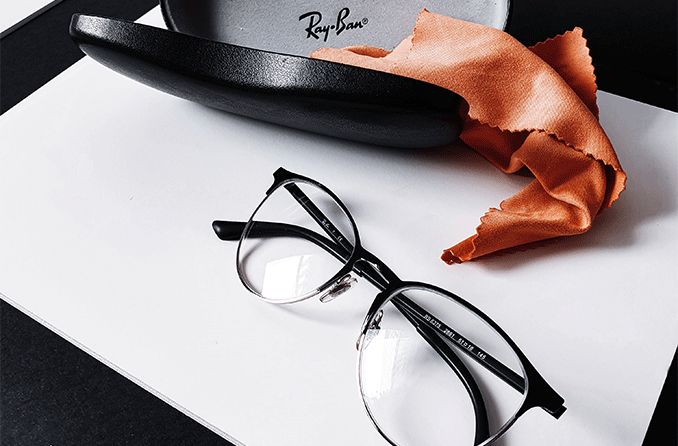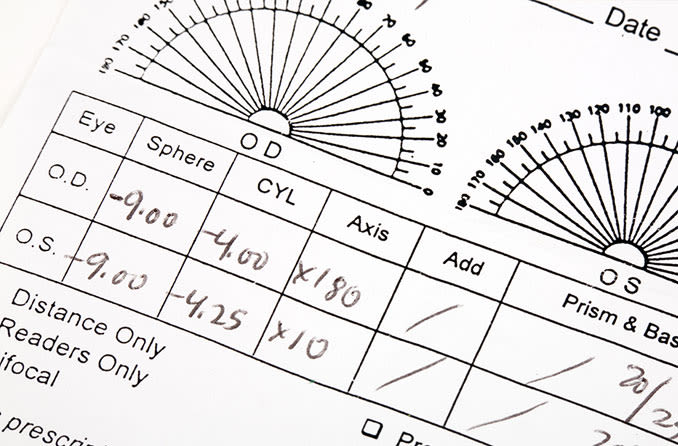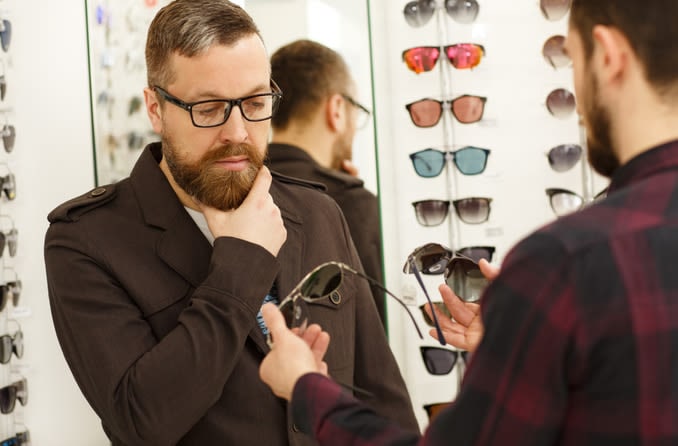What is the average cost of eyeglasses?
Eyewear prescription in hand, you're ready for the fun part: buying the perfect lenses and frames. How do you find reasonably priced eyeglasses that you love without skimping on style and quality?
A good place to start is the average cost of prescription glasses in the United States:
- Eyeglasses from a discount retailer had a median out-of-pocket cost of $184, according to Consumer Reports.
- Eyeglasses from a top eyewear chain had a median out-of-pocket cost of $369, according to the same report.
But the price you actually pay can vary widely. Frames can range from a rock-bottom $8 for metal-alloy versions to $600 for their brand-name counterparts.
Designer eyeglasses from the likes of Calvin Klein or Valentino can command up to $1,000.
Lenses are another matter. Specialty lenses, protective coatings and bifocal or progressive options affect the final price tag. Variables like the cost of production, research and development, manufacturing and dispensing can change the price, too.
Will vision insurance lower the cost of glasses? It certainly could, if you have it.
Insurance coverage for eyeglasses varies from plans with no co-pay to a $50 co-pay. Many policies cap total coverage at around $120.
If you're among those who crave the most stylish brands and every lens option in the book, money may not be an issue. But if you're looking for cheap eyeglasses, you'll want to keep an eye out for a few important factors.
Which factors affect the cost of eyeglasses?
Eyeglass costs typically include lenses, frames, nose pads (if the frame uses them), a case and a microfiber cleaning cloth.
Your out-of-pocket expense depends on your insurance coverage (if available), the nature of your prescription and your personal preferences.
Single-vision lenses cost the least, while multifocal lenses like bifocals, trifocals or progressive lenses cost more. If you have anything unusual or problematic about your prescription, like a particularly strong vision prescription, you might pay a little more, too.
Technology offers more eyeglass lens choices than ever. But with more options comes more ways to affect the final price.
Lens types include:
- Conventional plastic – A popular, low-cost option.
- Aspheric – Slim and attractive lenses that sharpen peripheral vision.
- High-index plastic – Thinner, lighter lenses with better built-in UV protection.
- Wavefront technology – Vision-sharpening lenses fabricated based on how light travels through the eyes.
- Polycarbonate and Trivex – Thinner and lighter than conventional lenses with up to 10 times higher impact resistance.
Special lens treatments may also add to the final cost. They include:
- Lens tints
- Anti-reflective coating
- Photochromic lenses that darken outside
- Polarized lenses that reduce glare while driving
- Scratch-resistant coatings
- UV protection to shield the eyes from the sun's ultraviolet rays
How do frame materials affect eyeglass costs?
Plastic frames may be cheaper than metal ones, according to the American Academy of Ophthalmology. Plastic is tough, lightweight and comes in a lot of color choices.
If you plan on steering clear of designer frames, plastic glasses may be your best bet for budget.
Metal frames cost a bit more. They're strong and lightweight, thanks to alloys like titanium and aluminum. Higher quality metal frames can even resist corrosion.
But keep in mind that not all frames are hypoallergenic. Read the specifics to learn what your frames are made of, especially if you're allergic to nickel or plastics.
What if your prescription is difficult?
If you have vastly different prescriptions in each eye or need a high degree of vision correction, you'll want to leave a little more room in your eyeglass budget. People with these conditions can expect to pay a bit more for glasses.
If you've had trouble getting the right lenses, you might be able to reduce costs by buying your frames online and having your optician insert the lenses into them.
SEE RELATED: How bad is my vision prescription?
Where should you shop for glasses?
An eye doctor's office. Your optometrist or ophthalmologist office is the likely first stop. This used to be the only place you could get lenses after an eye exam. Buyers were at the mercy of the optician and frame selections were limited — but not anymore.
Retail vision stores. These one-stop shops for eyewear offer all kinds of frame styles and customizations. Offerings like having lenses ready in one hour attract scores of eyeglass shoppers.
Vision centers. Pick up paper towels and a new door mat along with your prescription glasses. Stores like Walmart and Target usually have optical centers with a good selection of reasonably priced frames.
Warehouse clubs. Fans of deep discounts and bulk-buying flock to Costco, Sam's Club and similar optical departments for cut-rate designer glasses and regular frames.
Online. You can find lenses and frames at all price points at online eyewear retailers, which let you shop for glasses by color, gender, style, material, size and shape. Buying eyeglasses online can be convenient and cost-effective, though you can't try them on like you would in a brick-and-mortar store. Luckily, many online retailers have generous return policies to help you find the best fit.
What else should you look for?
Wherever you buy glasses, check out the retailer's reviews and return policies. If most reviews are positive, chances are your experience will be too.
Return policies should include a money-back guarantee or provide a free replacement within 14 to 30 days. If you buy online, look for fit and style guarantees including no-questions-asked returns or exchanges.
It's also a good idea to shop with U.S. retailers, since overseas sellers don't have to adhere to FDA regulations.
Now that you know what factors into a pair of glasses' overall cost, you can start checking out frames, styles and types that will make you look like a million bucks — at a much more manageable price.
READ MORE: 5 signs your glasses don't fit










